Related Research Articles
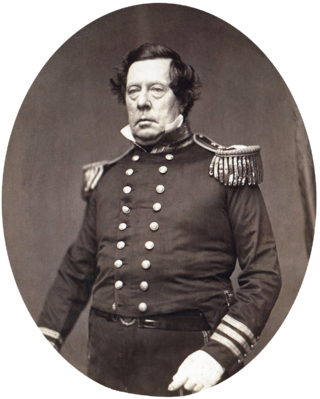
Matthew Calbraith Perry was an American naval officer who commanded ships in several wars, including the War of 1812 and the Mexican–American War. He played a leading role in the Perry Expedition that ended Japan's isolationism and the Convention of Kanagawa between Japan and the United States in 1854.

Charles Wilkes was an American naval officer, ship's captain, and explorer. He led the United States Exploring Expedition (1838–1842).

Franklin Buchanan was an officer in the United States Navy who became the only full admiral in the Confederate Navy during the American Civil War. He also commanded the ironclad CSS Virginia.

Joel Abbot was a U.S. naval officer who served notably in the War of 1812, and commanded a ship during Commodore Perry's 1853-1854 visit to Japan. Commodore Joel Abbot was Admiral Matthew C. Perry's second in command when they opened Japan in 1853–1854.

Daniel Ammen was a U.S. naval officer during the American Civil War and the Reconstruction era, as well as a prolific author. His last assignment in the Navy was Chief of the Bureau of Navigation.
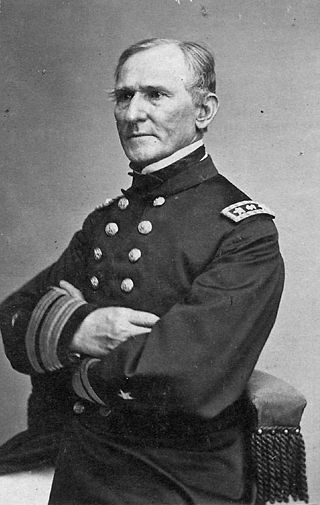
Henry Haywood Bell was an American admiral in the United States Navy. In the American Civil War, he took part in the liberation of New Orleans and the lower Mississippi. Later he was sent to the Far East to command the East India Squadron. In summer 1867, he led a punitive expedition to avenge the Rover incident, in which he ultimately drowned.
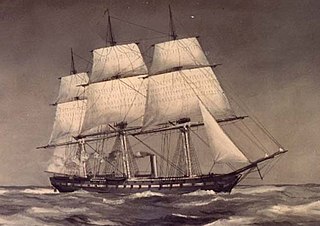
USS Wabash was a steam screw frigate of the United States Navy that served during the American Civil War. She was based on the same plans as Colorado. Post-war she continued to serve her country in European operations and eventually served as a barracks ship in Boston, Massachusetts, and was sold in 1912.

The second USS Porpoise was a 224-ton Dolphin-class brigantine. Porpoise was later re-rigged as a brig. She was based on the same plans as Dolphin.

Daniel Lawrence Braine was an admiral of the United States Navy.
USS John Hancock was an armed steam tug in the United States Navy during the 1850s. She was named for Founding Father John Hancock and saw action against rioters in Massachusetts, filbusters in Cuba, rebels in China, and Native Americans in the Washington Territory. She took part in a hydrographic surveying expedition to East Asia and the Pacific Ocean.

James Henry Gillis was a rear admiral in the United States Navy. His active-duty career extended from the 1850s through the 1890s, including service in the American Civil War.

Captain Richard Worsam Meade II was an American naval officer. He was also called Richard Worsam Meade, Sr. to distinguish him from his son, Rear Admiral Richard Worsam Meade III.
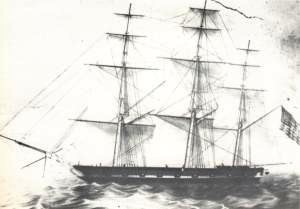
James Glynn was a U.S. Navy officer who in 1848 distinguished himself by being the first American to negotiate successfully with the Japanese during the "Closed Country" period.

Commander William Lewis Herndon was one of the United States Navy's outstanding explorers and seamen. In 1851 he led a United States expedition to the Valley of the Amazon, and prepared a report published in 1854 and distributed widely as Exploration of the Valley of the Amazon.

The East India Squadron, or East Indies Squadron, was a squadron of American ships that existed in the nineteenth century. It focused on protecting American interests in the Far East, while the Pacific Squadron concentrated on the western coasts of the Americas and the South Pacific Ocean. Its duties included the Yangtze River Patrol in China. The East India Squadron was established in 1835 and existed until it became part of the Asiatic Squadron in 1868.

Joseph Nicholson Barney was a career United States Navy officer (1835–1861) who served in the Confederate States Navy in the American Civil War (1861–1865).
USS Fenimore Cooper was a United States Navy schooner assigned as a ship’s tender to accompany a surveying expedition. After departing from Hampton Roads, Virginia, and navigating the Cape of Good Hope, the expedition traveled throughout the Pacific Ocean accumulating hydrographic information from the South China Sea to the Bering Strait in the Arctic and Alaska.

George Parker Upshur was a career officer in the United States Navy and superintendent of the U.S. Naval Academy (1847-1850).
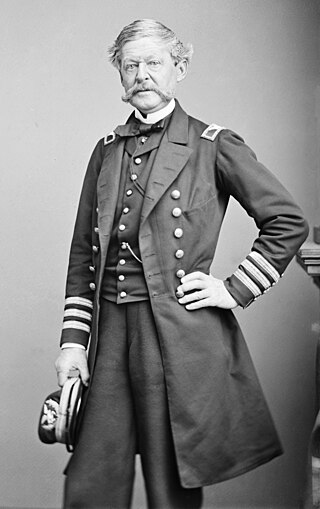
Cadwalader Ringgold was an officer in the United States Navy who served in the United States Exploring Expedition, later headed an expedition to the Northwest and, after initially retiring, returned to service during the Civil War.
Robert Edson "Dusty" Dornin was a United States Navy officer who served in the Pacific Theater of World War II as a very successful submarine commander. He remained in the Navy until his retirement in 1965.
References
- ↑ Tate, Merze (1962). "Slavery and Racism as Deterrents to the Annexation of Hawaii, 1854-1855". The Journal of Negro History. 47 (1): 15.
- Attribution
 This article incorporates text from a publication now in the public domain : Herbermann, Charles, ed. (1913). "Bernard Dornin". Catholic Encyclopedia . New York: Robert Appleton Company.
This article incorporates text from a publication now in the public domain : Herbermann, Charles, ed. (1913). "Bernard Dornin". Catholic Encyclopedia . New York: Robert Appleton Company.